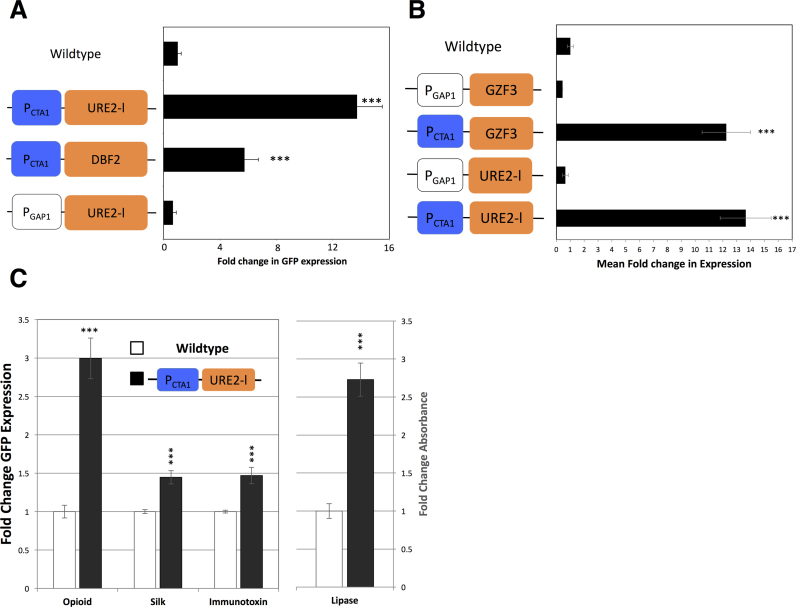Figure 2.
Analysis of library hits. (A) Heterologous expression profiles for enhanced rewiring clones, relative to wildtype strain expression. The CTA1::URE2-like strain shows significantly higher GFP fluorescence (∼14-fold over wildtype). When the CTA1 promoter is replaced by the constitutive GAP1 promoter, heterologous expression is similar to wildtype (N = 44, ±SE). t-test ***P < 0.0001. (B) CTA1::GZF3 shows a similar phenotype to CTA1::URE2-like highlighting the importance nitrogen source regulation in heterologous production. Note relevant GAP1 promoter fusions show no altered phenotype. Mean fold change in GFP fluorescence for rewired lines compared to wildtype. (N = 44, ±SE). t-test ***P < 0.001. (C) CTA1::URE2-like rewiring provides a general solution to enhancing production of ‘challenging’ proteins. Mean fold change in GFP fluorescence for C-terminal GFP tagged human membrane bound opioid receptor, spider dragline silk and synthetic immunotoxin proteins along with enzymatic activity of functional lipase. Lipase activity measured by absorbance at 405 nm after 20 min incubation. Mean values are for CTA1::URE2-like compared to control for growth normalized clones. (N = 44,±SE). t-test ***P < 0.001.

